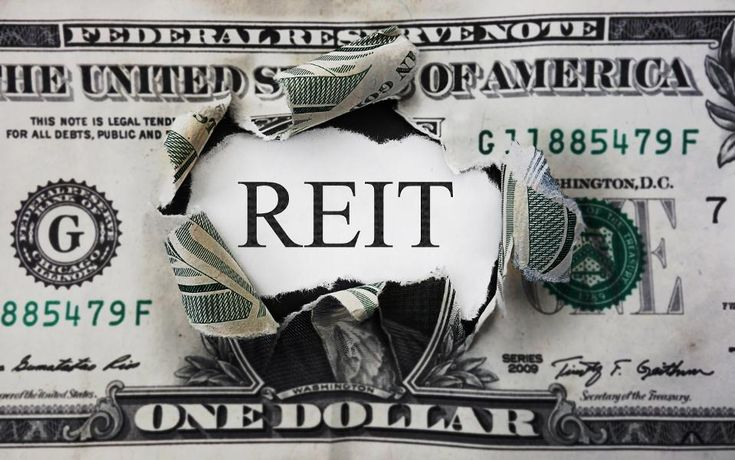Introduction: The Changing Face of Wealth and Real Estate
High Net Worth Individuals (HNIs) have long had a love affair with real estate. From sprawling golf-course-facing villas to posh penthouses in Mumbai or Gurugram, physical property has always been considered a trophy asset — a tangible symbol of success and security.
But in 2025, the definition of smart investment for India’s HNIs is changing.
● A new generation of millionaires is prioritizing agility over acreage.
● Global economic uncertainty has made diversification a survival strategy, not a luxury.
● Financial literacy among HNIs is pushing them towards Alternative Investment Funds (AIFs), Real Estate Investment Trusts (REITs), and fractional ownership.
● Luxury homes are still being purchased — but often for lifestyle, not returns.
So what’s really happening behind the closed doors of India’s wealth managers, family offices, and HNI strategy boards in 2025?
Let’s decode the seismic shift.

1. Who Are India’s HNIs in 2025?
Before diving into trends, it’s important to define who we’re talking about.
According to the Hurun India Wealth Report 2025:
● An HNI is typically someone with net investable assets of ₹7 crore+.
● India is expected to have 7.5 lakh+ HNIs by end of 2025, a 15% growth from 2023.
● The top HNI hubs include Mumbai, Delhi-NCR, Bengaluru, Hyderabad, Chennai, Pune, Ahmedabad, and surprisingly — Tier-2 cities like Indore and Kochi.
What’s different now?
▪ HNIs are younger. Many are 30–45-year-old tech entrepreneurs or startup founders.
▪ Women are rising. Women now constitute 15–20% of India’s HNI population.
▪ NRI interest is booming. NRI HNIs are entering India’s real estate space not just for emotional connection, but calculated gains.

2. The Decline of ‘Buy-to-Hold’ in Luxury Real Estate
Luxury real estate was once a default choice.
Buying a ₹10–₹25 crore apartment in a city like Mumbai, or a ₹5–₹10 crore farmhouse in Delhi’s outskirts was seen as both status and strategy.
But 2025 is seeing HNIs asking tougher questions:
● What’s the real ROI on this luxury home?
● Can I liquidate it quickly if the market dips?
● How does this compare to 18% returns I’m seeing in Category II AIFs?
According to Knight Frank’s Wealth Report 2025:
▪ Residential luxury real estate returns averaged 5–7% p.a. over 5 years, excluding rental income.
▪ After capital gains tax and property maintenance, net yield drops to 2–3% in many cases.
▪ Meanwhile, select AIFs, REITs, and global real estate funds are delivering 8–20%+ with better liquidity.
Result: HNIs aren’t leaving real estate, but they’re rethinking it.
3. The Rise of AIFs: Quietly Disrupting the Rich
❝Real estate without the hassle of real estate.❞
Alternative Investment Funds (AIFs) — especially Category II Real Estate AIFs — are attracting massive HNI inflows in 2025.
These funds pool investor capital into diversified real estate ventures including:
● Commercial buildings
● Co-living spaces
● Warehousing and logistics hubs
● Senior living or student housing
● Redevelopment or distressed assets
According to SEBI data (2025 Q1):
▪ AIFs saw ₹1.8 lakh crore worth of assets under management in real estate, a 30% jump year-on-year.
▪ 60% of new investors in real estate AIFs are first-time HNIs.
▪ AIFs offer structured exits, professional fund management, and capital protection clauses — which are reassuring in volatile markets.
Why HNIs prefer AIFs over direct ownership:
● No stamp duty or registration costs
● No tenant, repair, or compliance headaches
● Structured IRRs (Internal Rate of Return) ranging from 12–20%
● Tax-efficient structures with pass-through benefits

4. Beyond Bricks: Fractional Ownership Goes Mainstream
If 2023-24 was the testing phase, 2025 is the breakout year for fractional ownership in India.
Platforms like PropertyShare, Strata, Assetmonk, Myre Capital and newer fintech entrants are letting HNIs:
▪ Invest ₹10–₹50 lakh in commercial-grade assets
▪ Earn monthly rental income
▪ Get exposure to Grade-A offices, warehouses, retail spaces
▪ Exit in 3–5 years with capital appreciation
A ₹20 crore commercial space in BKC, Mumbai? Now you don’t need to buy the whole thing.
Key reasons fractional ownership is booming:
● Lower entry barrier
● Institutional-grade due diligence
● Portfolio diversification
● Exit liquidity via resale marketplaces
Projected market size by 2030: ₹3,500–4,000 crore (as per RedSeer report)
5. REITs Get Sexy Again in 2025
Once considered boring by HNIs, REITs (Real Estate Investment Trusts) have found new fanfare in 2025.
Especially after:
● The Bharat High-Yield REIT launched in early 2025 with 8.5% returns
● Embassy REIT and Brookfield REIT expanded into Tier-2 cities
● Global REITs became accessible via Indian fintech apps
Why HNIs are adding REITs to their real estate portfolios:
▪ Listed REITs offer daily liquidity
▪ Steady dividend yield (6–9%)
▪ Exposure to large-scale office parks, malls, data centers
▪ Tax benefits under new HNI wealth management codes

6. HNIs and ESG: Green Buildings, Conscious Capital
2025 is not just about returns — it’s about responsible wealth.
A new breed of conscious HNIs is asking:
● Is this property ESG-compliant?
● Does it have a green building certification (like IGBC or LEED)?
● Is my capital improving urban sustainability?
According to Colliers India:
▪ Green-certified buildings command 10–15% premium in rentals
▪ ESG-focused real estate funds (within AIFs) have outperformed by 2–4% annually
▪ 45% of HNIs below 45 years are asking for ESG reports during real estate due diligence
New trend: HNIs are investing in solar-integrated housing, smart cities, and eco-resorts with land banks.
7. Tech & Tokenization: The Next Wealth Frontier
HNIs in 2025 are not just investing in real estate — they’re investing in real estate tech.
This includes:
▪ Proptech startups solving financing, leasing, or construction
▪ Tokenized real estate assets using blockchain for global exposure
▪ Investing in platforms enabling cross-border REIT purchases
Global players like RealT, SolidBlock, and Indian pilots of tokenization by NSE & SEBI are under close HNI radar.
Why?
● Real estate tokens can be bought/sold like stocks
● Transparent ownership ledgers via blockchain
● Global diversification in Manhattan or Dubai at fractional values
● Liquidity with 24×7 trading potential
Still early in India — but gaining steam.

8. International Diversification: Real Estate Without Borders
Post-COVID, Indian HNIs are aggressively going global — not just with stocks, but properties.
Top choices in 2025:
▪ Dubai: 0% capital gains tax, NRI friendly, short-term rental boom
▪ UK: London commercial properties seeing resurgence
▪ Portugal, Spain: Golden visa schemes and yield-generating vacation homes
▪ Singapore: For stability, long-term office returns
▪ U.S.: Tokenized assets, and Sunbelt states like Texas/Florida for rentals
Tools making it easy:
● Fintech platforms offering LRS-based overseas property deals
● Digital REITs like Yieldstreet or Fundrise accessible to Indian HNIs
● India–UAE real estate alliances via new free trade zones
9. What This Means for Interior Designers, Developers & Realtors
If you’re in the luxury home, architecture, or real estate business, HNI behavior in 2025 means one thing:
🚨 Adapt or be left behind.
How to stay relevant:
▪ Offer value beyond aesthetics — help clients understand asset value.
▪ Pitch modular design, co-living fit-outs, green certifications, and tech-readiness.
▪ Partner with wealth managers and AIF distributors.
▪ Offer buy-back options or fractional schemes for your built spaces.
▪ Create interiors that are “short-term rental ready” (Airbnb, OYO Luxe, etc.)

10. The Future: Hybrid Investment Models
2025 is the year HNIs finally drop the “either/or” mindset.
Luxury + Liquidity
Lifestyle + Logic
Emotion + Excel Sheets
The HNI portfolio now often includes:
● 1–2 physical homes (Delhi, Goa, Dubai, etc.)
● ₹1 crore in Real Estate AIFs
● ₹50 lakh in REITs and fractional assets
● ₹25 lakh in tokenized global platforms
● ₹5 crore in strategic land banks or luxury plots
Diversification is no longer just financial — it’s also geographic, conceptual, and technological.
Conclusion: The Emotion Is Still There — But Backed by Data
HNIs haven’t stopped loving real estate.
But in 2025, they love it smarter.
They’re not just buying homes — they’re building wealth ecosystems.
They’re not just decorating living rooms — they’re calculating Internal Rate of Return (IRR).
They’re not just obsessed with granite countertops — they’re asking about exit liquidity, governance, and rental yield.
As India’s economy matures, so does its affluent class. And with that, real estate evolves — from a vanity purchase to a versatile wealth vehicle.
Contact Us for Strategic Real Estate Design & Consulting
Whether you’re planning:
● A luxury villa project
● A rental-optimized interior fit-out
● Green-certified commercial space
● An AIF-backed development strategy
📩 Mishul Gupta and his team specialize in future-ready architecture, design, and investment-led real estate strategies.
📧 Email: contact@mishulgupta.com
📍 Location: Ambala, Haryana | Serving All India
🌐 Website: www.mishulgupta.com
